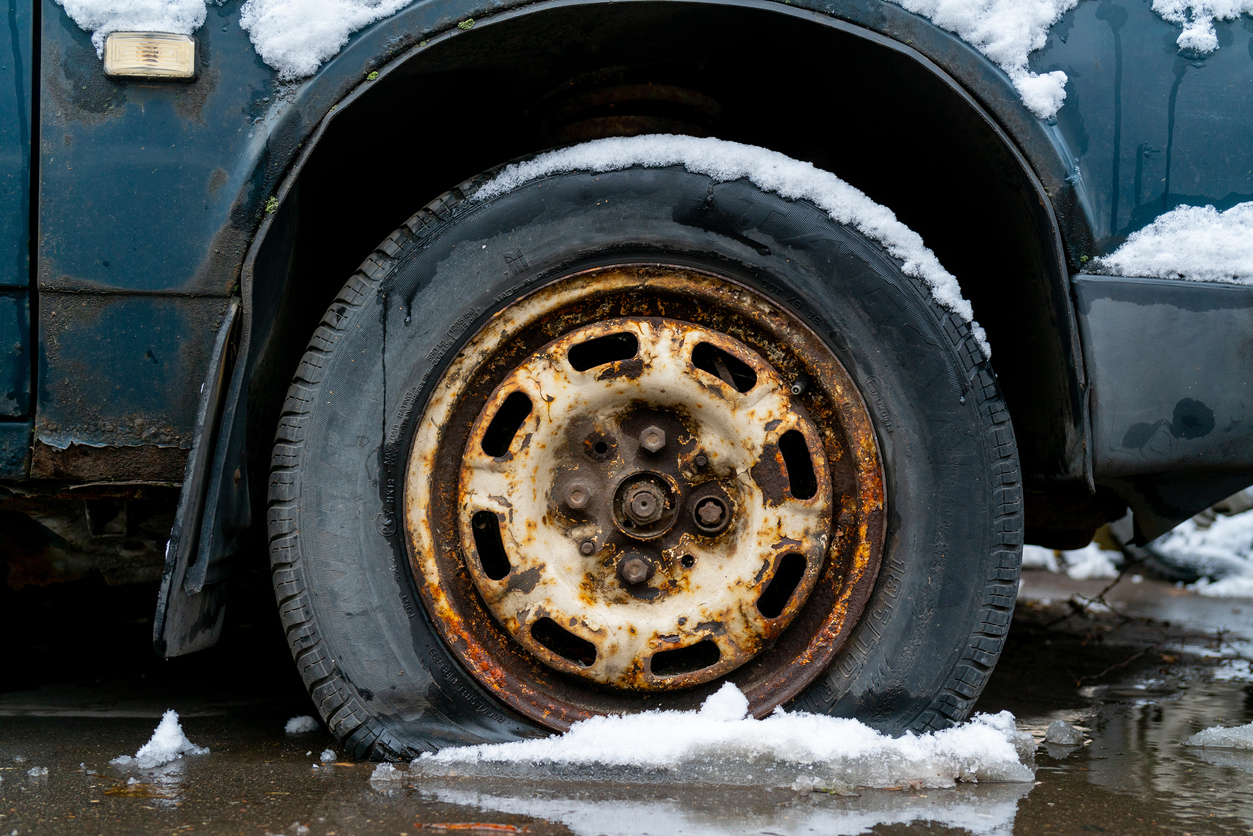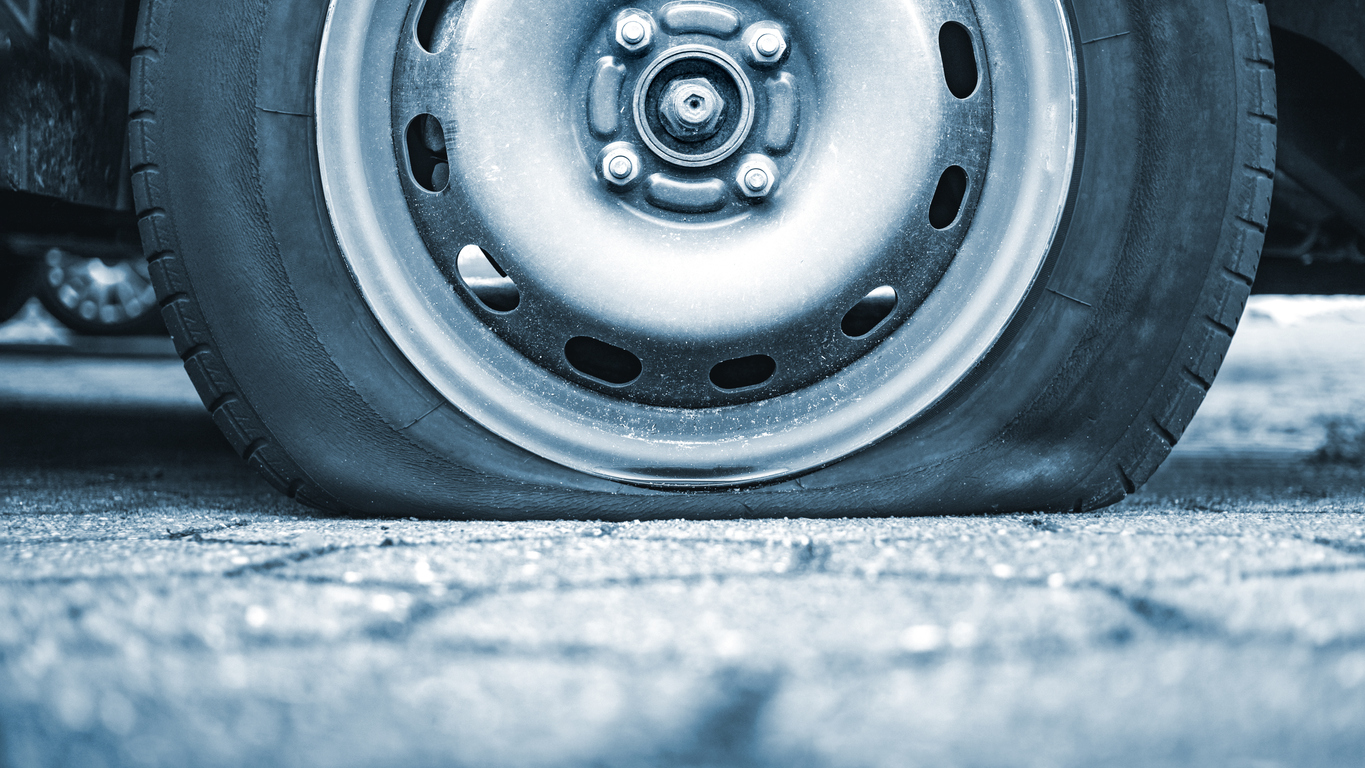There’s a common misconception that tires can “deflate” in cold weather. In reality, tire pressure only decreases by a small amount in colder temperatures. So, don’t worry – your tires won’t suddenly go flat just because it’s chilly outside. Tires deflate in cold weather for several reasons. Knowing them could help you prevent or manage a tire blowout or unnecessary tire repair.
1- Temperature Changes
Tires are made of rubber, which is affected by ambient temperatures. When the outside temperature drops, molecules contract and cause the tire pressure to decrease. A drop of 10 degrees Fahrenheit is enough to reduce inflation by one pound per square inch (PSI).
2- Snow Cover on Roads
Snow that accumulates on roads reduces friction between your vehicle’s tires and the surface below it, leading to an easier rolling process. That results in lower pressure inside the wheels’ cavity since they have less fight against the surface.
3- Icy Roads
Icy roads significantly increase the risk of slipping and skidding, which can cause a loss of control over the car. When drivers hit the brakes on slippery surfaces, they also tend to do so abruptly, which creates a sudden deceleration that could blow out a tire and require tire repair.
4- Wind
When combined with other factors such as snow or ice, wind can significantly impact a tire’s pressure. It can cause the tire to bulge outward if it blows from the front or inward if it comes from the back.
5- Road Salt
Winter road salt not only corrodes your car’s body but also eats away at your tires, making them weaker and more vulnerable to tire repair pressure loss throughout the year.
6- Tire design
Tires are made of rubber that shrinks when temperatures drop, diminishing tire pressure in cold weather conditions. Rubber in tire tread is also affected in these conditions since it comes into contact with water vapour in the air, hardening it and reducing tire pressure.
7- Car Rides
If you have a roof rack or items on top of your vehicle, they put additional weight on top of your car’s tires. This increases tire pressure because more air is forced inside the tire cavity than outside where you need it for increased grip on icy roads. If you can’t take off some items from the top of your car, you might need to add air to your tires more often during the winter.
8- Driving on Low Profile Tires
Low-profile tires, popular among luxury car owners, have less tire sidewall than regular tires. That means that when you hit a pothole or go over a bump, the tire is more likely to be damaged and lose pressure.
9- Underinflation
If you forget to check your tire pressure before winter hits, it’s likely that at some point, your tire pressure will drop below the recommended level. And as we mentioned earlier, a decrease in PSI by just 10 degrees can result in a loss of 1 pound per square inch.
10- Old Tires
Just like everything else, tire rubber deteriorates over time. It becomes thinner and loses its elasticity after you’ve used it for several years. When tire pressure reaches lower than the recommended level, the tire starts to wear off more quickly than usual, further reducing tire pressure until the tire fails.
11- High-Speed Driving
Driving at high speeds can cause tire pressure to drop by creating cracks inside the tire cavity that let air escape. This happens because of vibrations inside the tire, which decrease normal airflow from one part of the tire cavity. Don’t forget that every time your car goes over a bump or pothole, there’s a chance that one or more tires will lose some air too.
12- Inadequate Ventilation
If the valve cap that seals the tire pressure sensor isn’t screwed on tightly, it can let air escape over time. Or, if there’s a crack in the tire, air can also escape through that opening.
13- Tires Not Warmed Up
Just like your body, tires need time to warm up before they’re able to function at their best. When you first start driving your car in winter conditions, the cold tires won’t have the same grip as they would when they’ve had a chance to heat up.

So there are a few reasons why tires might deflate in cold weather, from the tire’s design to the conditions outside. Remember that all of these factors can also apply during other seasons, not just winter. Always be sure to check your tire pressure before hitting the road, and if you notice that it’s lower than the recommended level, don’t hesitate to add some air. And if you’re ever in doubt, it’s always best to take your car to a tire specialist for a check-up.
